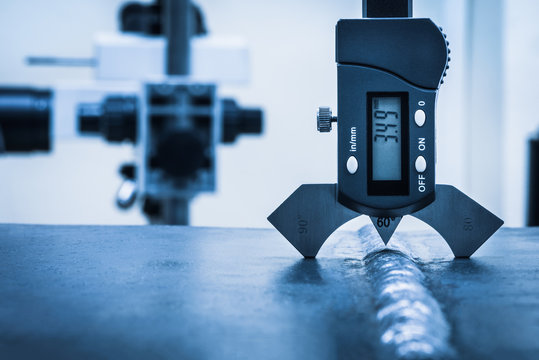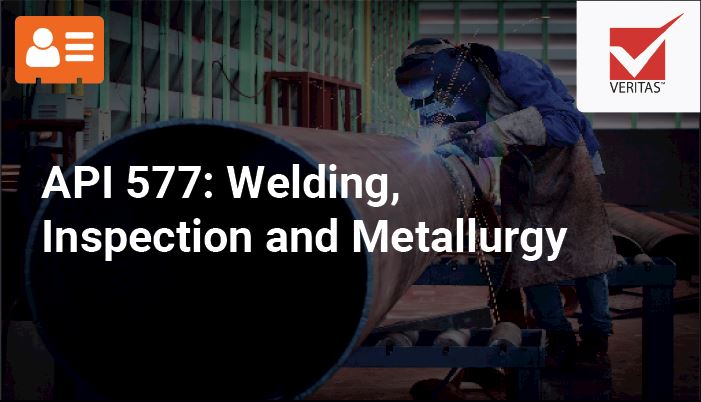Exactly How Reliable Welding Examination Boosts Structural Honesty and Durability
In the world of construction and design, the importance of welding evaluation can not be overemphasized, as it plays an essential duty in making sure structural integrity and prolonging the lifespan of jobs. By deploying a variety of innovative inspection strategies, such as radiographic and ultrasonic screening, experts can pinpoint defects that may endanger the dependability of a framework. Nevertheless, the concern remains: how do these precise processes translate into substantial benefits for sturdiness and safety? Sign up with the exploration of just how efficient welding assessments can transform possible susceptabilities right into toughness, adding to the long-lasting success of buildings.
Significance of Welding Inspection
Ensuring the structural integrity and security of bonded constructions requireds rigorous welding assessment procedures. Welding examination acts as an important secure in the building and construction and manufacturing industries, where the toughness and toughness of joints considerably influence the general efficiency of structures. This examination makes sure that welds satisfy specific standards and specs, decreasing the dangers associated with architectural failings. The repercussions of inadequate welds can be disastrous, resulting in costly repairs, operational downtimes, or also devastating failings, all of which highlight the critical importance of extensive assessment.
In enhancement to security, welding assessment plays an essential duty in high quality assurance. Sector requirements and codes, such as those from the American Welding Society (AWS) or the International Company for Standardization (ISO), necessitate adherence to strict standards, underscoring the importance of examinations in fulfilling these lawful and specialist responsibilities.
Secret Assessment Techniques

Ultrasonic Examining (UT) utilizes high-frequency audio waves to find subsurface flaws, supplying precise details concerning weld integrity without creating any kind of damages. Radiographic Checking (RT), including X-rays or gamma rays, gives a thorough picture of the weld's internal framework, exposing hidden flaws. Magnetic Particle Evaluating (MPT) is an additional non-destructive approach, particularly effective for discovering surface and near-surface gaps in ferromagnetic materials.
Penetrant Screening (PT) involves the application of a liquid dye to expose surface-breaking defects, using a economical and uncomplicated solution for non-porous products. Each technique has its certain applications, strengths, and limitations, and commonly a mix of methods is employed to achieve extensive assessment results. Mastery of these techniques enhances the dependability and durability of bonded structures, lining up with security and performance assumptions.
Identifying Common Problems

Porosity, identified by gas pockets within the weld, reduces the weld's stamina and sturdiness. Cracks, which can occur throughout or after welding, pose substantial threats due to read their potential to propagate under anxiety.
Insufficient combination, where the weld metal fails to bond entirely with the base product, undermines the architectural honesty, leading to weak joints. Slag incorporations happen when non-metallic products are caught in the weld, endangering its stamina and top quality.
Recognizing these defects through thorough evaluation approaches, such as visual assessment, ultrasonic testing, or radiography, is vital. Dealing with these issues ensures weld top quality, inevitably sustaining the architectural stability and security of the built environment.

Enhancing Architectural Performance
Comprehending the importance of identifying typical weld flaws normally brings about discovering approaches for enhancing structural performance. The foundational technique for enhancing efficiency requires employing innovative welding methods and materials that reduce problem incident. Making use of high-grade filler materials and making sure proper warmth control can considerably minimize concerns such as porosity and splitting, thus enhancing the weld's honesty.
Incorporating state-of-the-art welding modern technologies, such as laser welding and rubbing mix welding, further intensifies architectural strength. These strategies provide remarkable precision and reduced thermal distortion, directly impacting the durability and stamina of the welded structures. Additionally, adopting automated welding systems can make certain repeatable and regular weld top quality, minimizing human error.
Furthermore, applying rigorous pre-weld and post-weld treatments is important. Proper joint style, surface preparation, and stress-relieving procedures add to optimal weld performance. Performing comprehensive pre-weld assessments permits very early discovery of prospective concerns, helping with prompt corrections before they compromise the structure.
Lasting Benefits of Inspection

Via cautious evaluation techniques, the long-term benefits to architectural honesty come to be progressively obvious. Detailed and regular welding inspections play an find out here now important role in preventing structural failings by identifying inconsistencies and problems early in the construction process. This proactive technique makes sure that prospective problems are addressed prior to they can endanger the security and longevity of frameworks. By catching defects early, pricey repair work and downtime are reduced, eventually expanding the lifespan of the facilities.
Moreover, routine inspections add to preserving compliance with industry criteria and guidelines, thereby staying clear of financial and legal effects. This adherence to quality control not only improves the integrity of the structure yet likewise cultivates count on amongst stakeholders, consisting of customers, engineers, and governing bodies. The comprehensive documents of assessment results acts as an important resource for future maintenance and fixing initiatives, assisting in notified decision-making.
Additionally, effective inspection techniques sustain development by integrating advanced innovations such as non-destructive testing and electronic imaging, which can boost accuracy and performance. This technical combination even more emphasizes the commitment to quality in structural honesty. Eventually, spending in meticulous welding assessments is a sensible strategy that yields considerable long-lasting benefits, safeguarding both the physical and economic financial investment in facilities tasks.
Conclusion
Efficient welding assessment plays an important role in enhancing structural stability and longevity by identifying problems early in the building and construction Click Here process. Using methods such as aesthetic assessment, ultrasonic testing, and radiographic testing makes certain the detection of concerns like cracks and porosity that jeopardize weld toughness. Rigorous inspections ensure conformity with industry criteria, thereby prolonging the life expectancy of structures, minimizing expensive fixings, and cultivating stakeholder rely on the reliability and safety of welded building and constructions.
In the realm of building and construction and design, the importance of welding assessment can not be overemphasized, as it plays a pivotal role in making sure structural honesty and extending the lifespan of jobs.Making sure the architectural honesty and security of bonded building and constructions requireds extensive welding evaluation processes.Building upon the value of welding examination in safeguarding structural stability, comprehending the key inspection methods ends up being imperative for reliable application. Reliable welding examination incorporates a variety of approaches developed to examine weld top quality, guaranteeing compliance with rigid design standards - Welding Inspection Madison.Effective welding evaluation plays an important duty in boosting architectural honesty and durability by identifying defects early in the building and construction process